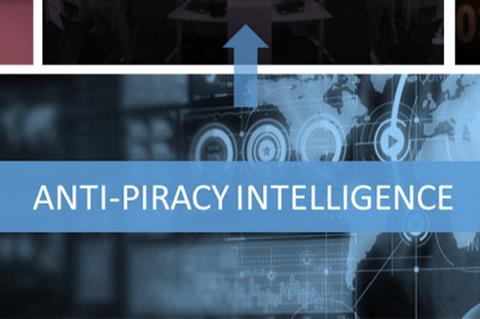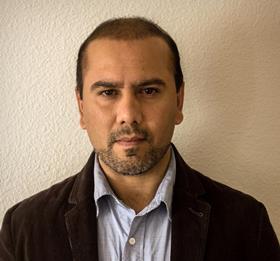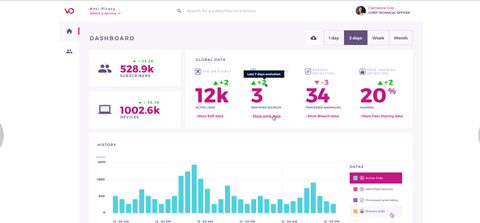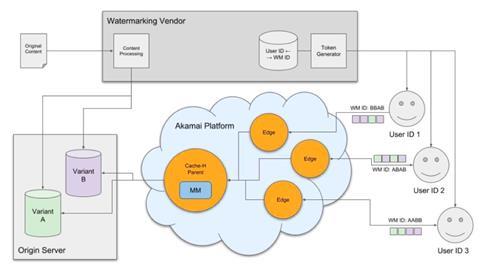Restreaming and credential sharing are among the challenges faced by broadcasters and platform owners, ensuring that content and revenue protection remain areas of innovation.

‘A war in which new fronts are opening up all the time’ might not be an original metaphor for the challenges facing content protection, but in reality, it’s hard to identify one that is more apt.
Recent years have seen the number of potential threats confronting content creators – both from organised ‘for profit’ piracy and more casual, between-consumer sharing – growing in precisely the same period that the advertising market supporting many of them has become significantly more fragmented and uncertain.
The scale of the problem can be gleaned from a report by Digital TV Research indicating that the cost of online streaming piracy will reach $52bn by 2022. Five territories – the US, Russian Federation, Brazil, India and UK – were found to be the most avid consumers of illegal piracy websites, with nearly 50% of visits for TV-oriented content and 20% for the latest movie releases.

If the scale of the problem has never been larger, at least content creators’ awareness of how high the stakes have become has also increased markedly in recent years.
Amit Kasturia, senior product manager at Akamai, observes: “We do see that customers are a lot more concerned now about the ill-effects of piracy, be that in the form of loss of subscribers, revenue, eyeballs or reputation.”
The possibility of service providers losing rights (for example, to major sporting events) or facing legal action on the basis that they have failed to adequately protect content is also shaping a landscape in which “content services are definitely looking to invest more resources into anti-piracy. You only need to look at how many organisations now have dedicated roles, such as content protection managers, to recognise that,” adds Kasturia.
“Customers are a lot more concerned now about the ill-effects of piracy, be that in the form of loss of subscribers, revenue, eyeballs or reputation” - Amit Kasturia, Akamai
A holistic view
Given the number of points in the content distribution and access pathways in which content piracy can occur, there is an onus on all concerned to take an entirely holistic view of the problem.
For vendors active in this space, this translates to an offer combining bespoke services – in which the company will work closely with a content creator to define and execute an anti-piracy strategy – and solutions that are more oriented towards off-the-shelf implementation.

Viaccess-Orca has been providing technologies with regard to content protection, encryption and rights management for 20 years, observes chief security officer Dr Guillaume Forbin. Today, its enterprise-related efforts revolve around its Anti-Piracy Center, whose primary components include: Eye on Piracy, which uses 24/7 real-time monitoring and detection to remove pirated content; dynamic watermarking, which operates campaign management systems and detects content redistributed from broadcast, IPTV and OTT networks; device assessment, which evaluates the security of the user’s firmware and provides continuous vulnerability monitoring to prevent cyber attacks; detection of illegal credential sharing by the use of AI; and breach detection services, which leverage user data with AI and machine learning to identify suspicious user behaviours.
- Read more: EU online piracy for film and TV falls
Forbin says that the company’s relationship with a new customer tends to commence with “an assessment of their distribution platforms,” with a focus on recent changes or additions. Frequently, there will be “weak points that can be fixable [quickly], while others – for example, there could be an issue with a specific type of set-top-box – will require a solution that is more complex. We can advise the content creator on how they can leverage the commercial relationship with the platforms to eliminate those weaknesses.”

The extent to which specific threats are growing at any one time tends to vary on a region-by-region basis. Nonetheless, Forbin says that illegal IPTV streams are a growing threat in multiple territories, while the distribution of pirated content via social media sites is rising markedly in South East Asia.
Content protection is by its very nature a moving target and in this regard, Forbin indicates that machine learning and AI will become increasingly important to piracy detection. Not only will they make it easier to “identify the outliers in the [customer data] and then investigate them,” this deeper understanding of viewer behaviour will “help in the definition of our rules, for instance with regard to thresholds that might established for one specific venue or device. If we see that these thresholds have been passed we can use machine learning to define what we see and then learn from this data to fine-tune the definition of rules in the future.”
Resisting restreaming
Like Viaccess-Orca, Akamai points to premium content – such as sports and other live events – as primary targets for privacy. With these content types to the fore, Akamai launched a new forensic watermarking solution in autumn 2018 that is designed to leverage the network edge to provide a more effective way to trace piracy back to the source. The solution can be deployed for three use cases – live, linear or simulcast, and VoD streaming – supports leading formats such as HLS and DASH, and is compatible with Akamai Media Delivery.
The awareness that time is of the essence – and that “a few seconds is what it is about” in terms of terminating illegal activity – is a big part of the drive around watermarking implementation. Amit Kasturia highlights the industry-wide problem of “restreaming and rebroadcasting, such as using tools to copy content streams then republish them on piracy sites. This means that [a lot of content creators] are in need of solutions that involve watermarking and are scalable and easy to implement, with real-time detection and the capability to clear down sessions immediately.”

Along with individual anti-piracy solutions, Akamai also offers managed services through a broadcast operations centre in which its network security engineers are “constantly monitoring streams and looking at all the anomalies, and on the basis of that we can then take action.”
Detecting and dealing with content theft that takes place after the content has left the distribution network will necessarily remain one of the primary aspects of anti-piracy innovation. It’s also one, says Kasturia, that benefits from close collaboration between vendors and service providers – hence Akamai’s partnering with “Friend MTS and others who have real-time fraud detection or piracy detection services, and are [therefore able] to implement watermarking with us on the edge.”
Cause for optimism?
Although the opportunity for illegal streams to be enacted quickly yet profitably means that the OTT era is always going to be one of considerable risk, the availability of more integrated and responsive anti-piracy services means that there is perhaps an increased sense of confidence that emerging threats can be managed effectively.
Recent innovations indicate “OTT-based services can be safeguarded and hardened to make content piracy [more problematic],” says Kasturia. Working with other stakeholders to address theft taking place when “content is in transit, or on the device endpoints [will continue to be critical], and it’s clear that more and more activity is taking place in those areas.



























No comments yet